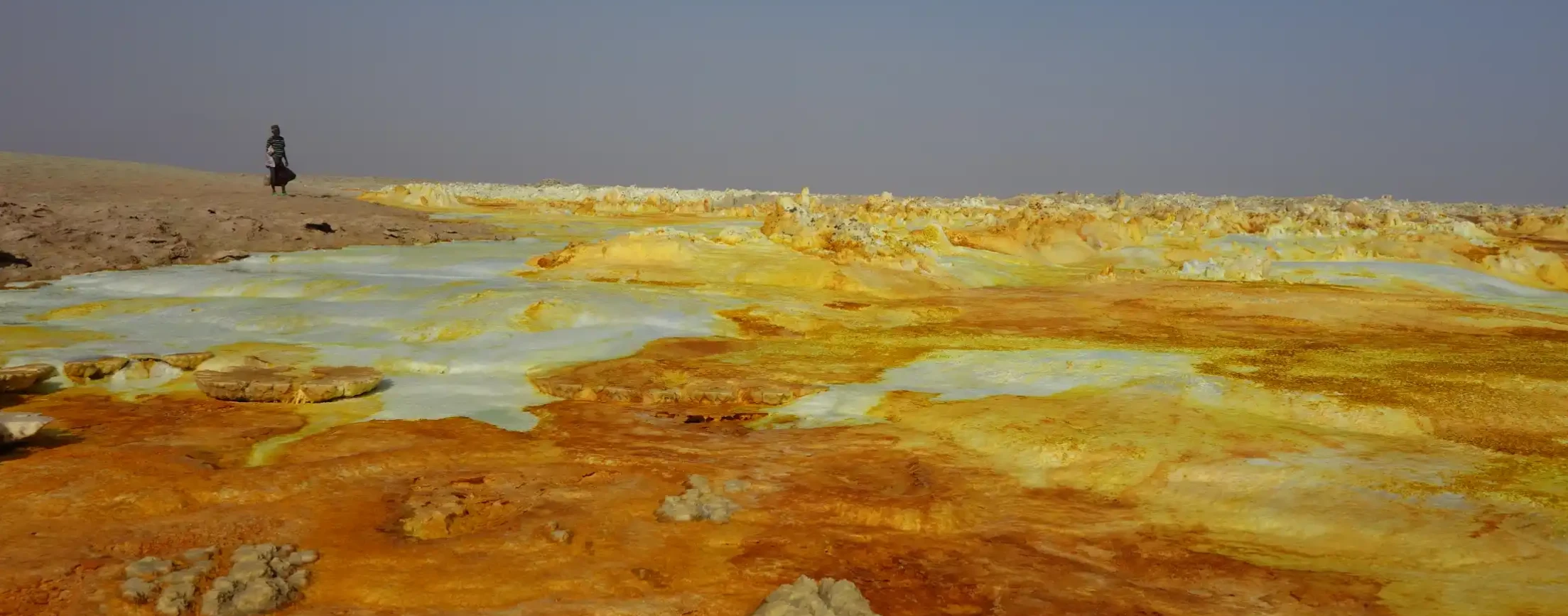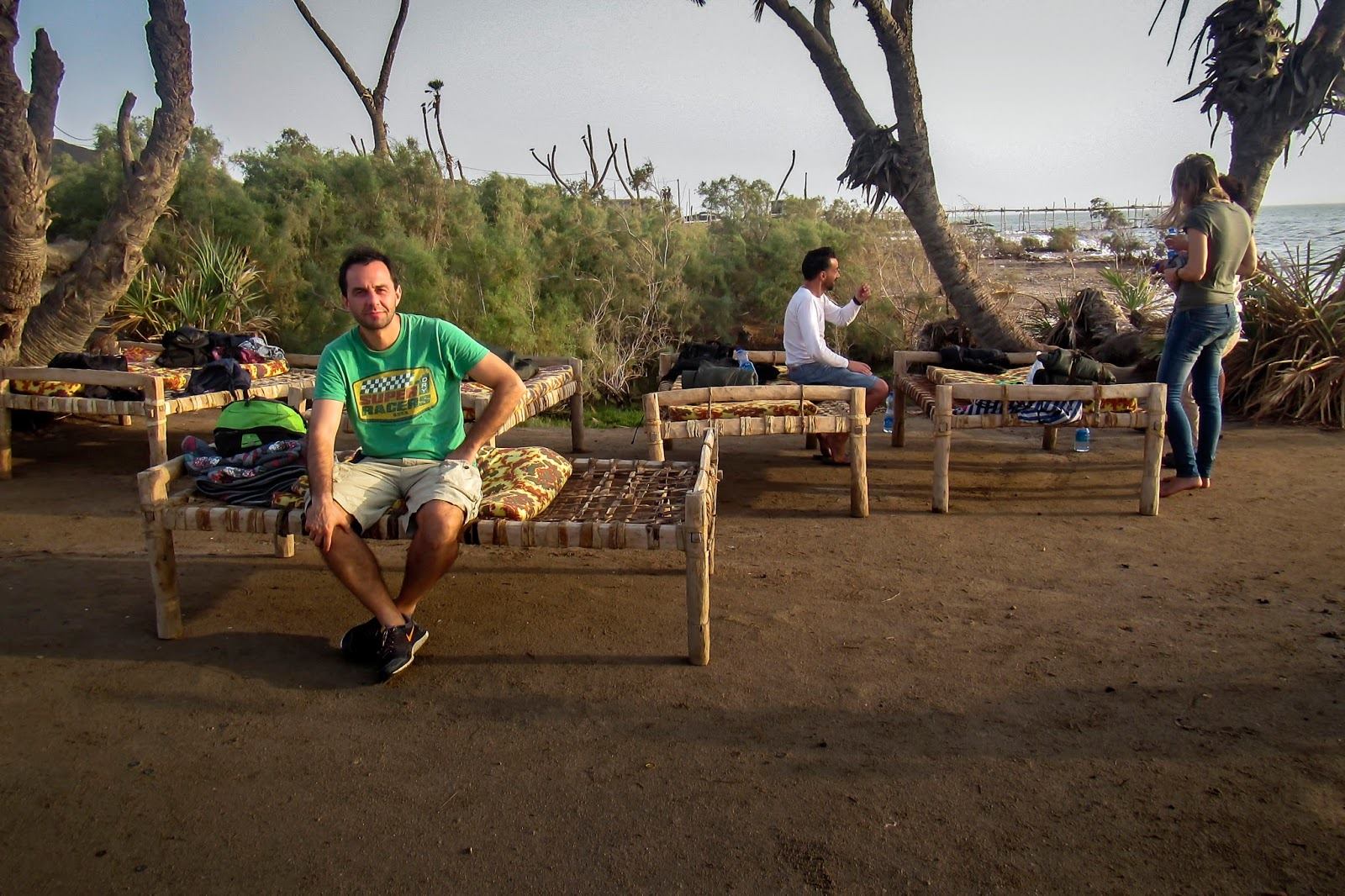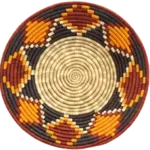Danakil Depression in Ethiopia
The Harsh Beauty of Earth’s Inferno

Image : Dallol Hydrothermal Field in Danakil Depression / Ethiopia
Overview of The Danakil Depression In Ethiopia
The Danakil Depression is a vast geological lowland located in northeastern Ethiopia, extending into southern Eritrea and Djibouti. It lies within the Afar Triangle, a unique geological depression formed by the divergence of three tectonic plates: the African Plate, the Arabian Plate, and the Somali Plate. This area is one of the most geologically active regions on Earth, with its landscape constantly shaped by the movement of these tectonic plates.
At its lowest point, the Danakil Depression plunges to about -125 meters (-410 feet) below sea level, making it one of the lowest and most extreme locations on the planet. The climate here is consistently among the hottest, with daily temperatures often exceeding 45°C (113°F), and even nighttime temperatures rarely dipping below 30°C (86°F). Despite the scorching heat, the Danakil Depression remains an incredibly visually stunning region, a surreal blend of fire, salt, acid, and ancient cultures. This unique combination of geological wonder and cultural history makes it an otherworldly destination, unlike anywhere else on Earth.
![danakil_depression_6_days_tour[1] danakil_depression_6_days_tour](https://www.greatethiopiantours.com/wp-content/uploads/danakil_depression_6_days_tour1.webp)
Image : Danakil Depression Erta Ale Volcano in Ethuiopia
Trust Factor
We’re proud to be Ethiopia’s top travel company, guaranteeing you the best experience. But don’t just take our word for it—hear what our travelers have to say!
Main Attractions:
🌋 Erta Ale Volcano (“Smoking Mountain”)
Erta Ale Volcano, meaning “Smoking Mountain” in the Afar language, is one of the few places on Earth with a persistent lava lake. Standing at about 613 meters (2,011 feet) above sea level, Erta Ale is a broad, relatively flat shield volcano with a wide summit crater roughly 600 meters across. The volcano’s lava lake has been continuously active since at least 1906, making it one of the longest-lived lava lakes known to science.
Reaching Erta Ale requires a challenging off-road adventure. The final approach involves a 1–2 hour drive across 50–70 kilometers of rugged black volcanic rock and hardened lava fields. The terrain is extremely rough, and skilled drivers with specially equipped 4×4 vehicles are necessary. Camels are traditionally used to transport camping equipment and supplies up to the volcano, and travelers also have the option to ride camels part of the way if needed.
Near the volcano’s rim, there are basic shelters built from volcanic rocks, offering protection from the wind and heat. Here, visitors sleep under the stars, surrounded by the raw, primeval landscape. The experience of standing just a few meters away from the bubbling, churning red-hot lava, with shimmering heat waves rising into the night sky, is utterly mesmerizing — an unforgettable glimpse into the living heart of the Earth.
🌋 Dallol Hydrothermal Field
The Dallol Hydrothermal Field is located in the far northern reaches of the Danakil Depression, close to the border with Eritrea. It was formed by a volcanic explosion crater, or maar, created when groundwater came into violent contact with hot magma beneath the surface. The result is one of the most surreal and colorful landscapes on Earth.
The area is a vivid tapestry of neon yellows, greens, and oranges, painted by minerals like sulfur, iron oxides, and salt. These intense, otherworldly colors give Dallol the appearance of an alien planet. Scattered across the field are acidic pools, some with a pH level close to zero, making them highly corrosive — beautiful to look at but extremely dangerous to touch.
Fragile salt formations rise up in bizarre shapes — terraces, spires, and crystalline crusts — while bubbling brine pools gurgle and steam under the intense heat. Walking through Dallol is like stepping into a living, breathing artwork, with thick sulfur fumes hanging in the air, adding to the unearthly atmosphere. It is an unforgettable experience, a true kaleidoscope of alien colors in one of the most extreme environments on the planet.
🏜️ Lake Asale (Assale) and the Salt Flats
Lake Asale (also known as Lake Assale) is a vast salt lake lying well below sea level in the heart of the Danakil Depression. It is surrounded by endless glittering salt flats, stretching out in a stunning white expanse under the blazing sun. The landscape is so flat and bright that it can appear almost like a giant mirror, especially during the cooler hours of the day.
The area around Lake Asale is famous for its traditional salt mining practices, which have remained largely unchanged for centuries. Afar workers carve out large slabs of salt, known as “amolé,” by hand using simple tools. These heavy salt blocks are then loaded onto long camel caravans, which transport them across the desert to distant markets — a practice that dates back hundreds of years. In ancient Ethiopia, salt was so valuable it was even used as currency, making Lake Asale a vital economic hub.
Visiting Lake Asale offers a rare glimpse into a way of life that feels timeless. Watching the ancient salt trade in action, surrounded by the shimmering salt flats, is an unforgettable experience — especially at sunset, when the fading light transforms the landscape into a brilliant mirror of gold and pink across the white, endless horizon.
🏝️ Lake Afdera
Lake Afdera is a striking deep blue hypersaline lake nestled in the desert south of Erta Ale. It sits in one of the most remote and arid parts of the Danakil Depression, surrounded by a barren landscape of salt flats, desert, and distant rugged mountains. Despite the harsh environment, the lake’s vivid color and lively shores make it a unique oasis in the middle of the desert.
The area around Lake Afdera is known for its hot springs, where travelers can take a refreshing dip after the exhausting heat and dust of the Danakil. The springs feed directly into the salty lake, creating naturally warm, mineral-rich pools perfect for swimming and relaxation. The sensation of floating effortlessly in the salty water, with the vast desert and mountains stretching out around you, is both surreal and deeply calming.
In addition to its natural beauty, Lake Afdera is also an important center for industrial salt production. Vast salt pans line the shores, where salt is harvested in large quantities — a modern continuation of the region’s ancient relationship with salt. Visiting Lake Afdera offers a peaceful break in the journey across Danakil’s brutal landscape, combining nature, culture, and relaxation in a setting like no other.
The People: The Afar
The Afar people are an indigenous nomadic group known for their remarkable resilience and ability to survive in one of the harshest environments on Earth. Traditionally, they have been pastoralists, raising camels, goats, and cattle across the arid landscapes of the Danakil Depression. Many Afar communities are also deeply involved in salt mining, a trade that has been central to their way of life for generations.
Fiercely independent and proud, the Afar have developed a culture perfectly adapted to the brutal conditions of their homeland. Afar men are often seen carrying a jile, a curved ceremonial dagger, along with a stick — symbols of identity, tradition, and readiness to defend their families and resources. Their society places great emphasis on honor, hospitality, and loyalty to their extended family groups.
Despite living in isolation for centuries, the Afar have preserved rich oral traditions and maintain strong communal structures. While they have historically had tense relations with neighboring groups, their culture continues to thrive through storytelling, song, and the passing down of knowledge from one generation to the next. Their enduring connection to the land and their traditional practices, especially salt mining, remain a vivid part of the Danakil’s living history.
Geography and Geology
The Danakil Depression is one of the most geologically fascinating regions on Earth, located at a tectonic triple junction where three tectonic plates — the African, Arabian, and Somali — are pulling apart. This ongoing process of rifting is literally reshaping the land, making the Danakil one of the most active geological areas in the world.
As the land splits and sinks, it gives rise to dramatic geological features such as rift valleys, volcanic activity, hot springs, and frequent earthquakes. The intense heat and movement beneath the surface create a constantly evolving landscape, where new cracks, fissures, and volcanic formations are continually appearing.
Over the course of millions of years, ancient oceans have repeatedly flooded the Danakil region, only to later evaporate under the searing heat. This cycle has left behind vast deposits of salt, in some places reaching thicknesses of up to 800 meters. These salt layers are now exposed to the surface, giving rise to the glittering salt flats and salt lakes that define much of the area’s character.
Major geological wonders like Erta Ale and Dallol are direct results of this rift-induced volcanism. Erta Ale’s persistent lava lake and Dallol’s vibrant, mineral-laden hydrothermal fields offer a rare glimpse into the raw power and beauty of a planet in the midst of transformation.
Climate
The climate of the Danakil Depression is among the hottest and most extreme on Earth. Daytime temperatures often soar between 40–50°C (104–122°F), creating a harsh, almost otherworldly environment. Even at night, the heat lingers, with temperatures rarely dropping below 25–35°C (77–95°F). The oppressive heat is a defining feature of the region year-round.
Rainfall in Danakil is extremely scarce. When it does occur, it typically happens during the brief rainy period from July to September, though even then, the amount of rain is minimal. The rest of the year remains dry, with cloudless skies and intense, relentless sun.
The best time to visit the Danakil Depression is during the “cooler” season, from November to February. During these months, while still hot by most standards, the temperatures are more manageable for travel and exploration. Visiting outside this window is possible, but it becomes a serious physical challenge due to the extreme heat and the unforgiving conditions of the desert.
🛡️ Safety
Traveling to the Danakil Depression requires careful planning and must be arranged through licensed tour operators. Due to the region’s unique conditions, police or military escorts are mandatory in certain areas, especially near Erta Ale and Dallol. While the region has experienced political tensions in the past, with proper tour arrangements and guidance, travel is generally considered manageable and safe for visitors.
🏕️ Accommodation
Accommodation in the Danakil Depression is extremely basic. Most travelers sleep in open-air rock shelters or tents set up at campgrounds. Since the facilities are minimal, it’s important to be well-prepared. Sleeping bags, flashlights, extra batteries, and solar chargers are essential items to bring with you to ensure comfort and safety during your stay.

Image : accommodation in Danakil Depression Ethiopia
✨ Why the Danakil Depression in Ethiopia is Unique:
The Danakil Depression is one of the very few places on Earth where you can experience the planet’s raw forces up close. Here, you can walk beside an active lava lake, stand on salt pans that are still forming, and witness acid pools that bubble and breathe with otherworldly energy. This dynamic landscape offers an unforgettable blend of extreme natural beauty and an ancient, living culture that has thrived in one of the harshest environments on Earth. It’s not just a tour — it’s a true adventure into one of the world’s most unique and untouched frontiers, where nature’s power and history collide in the most extraordinary way.
🎒 What to Pack
For a successful and comfortable trip to the Danakil Depression, pack the following essentials:
-
-
-
Lightweight, breathable clothes (preferably long-sleeve to protect from the sun)
-
Sturdy hiking shoes suitable for rough terrain
-
Wide-brimmed hat and sunglasses to shield from the sun
-
High-SPF sunscreen to prevent sunburn
-
Buff or scarf to protect from dust
-
Electrolyte tablets/powder to stay hydrated
-
-
Read Our Ethiopian Package Tours and Contact us for Adventure Danakil Depression Expedition.
